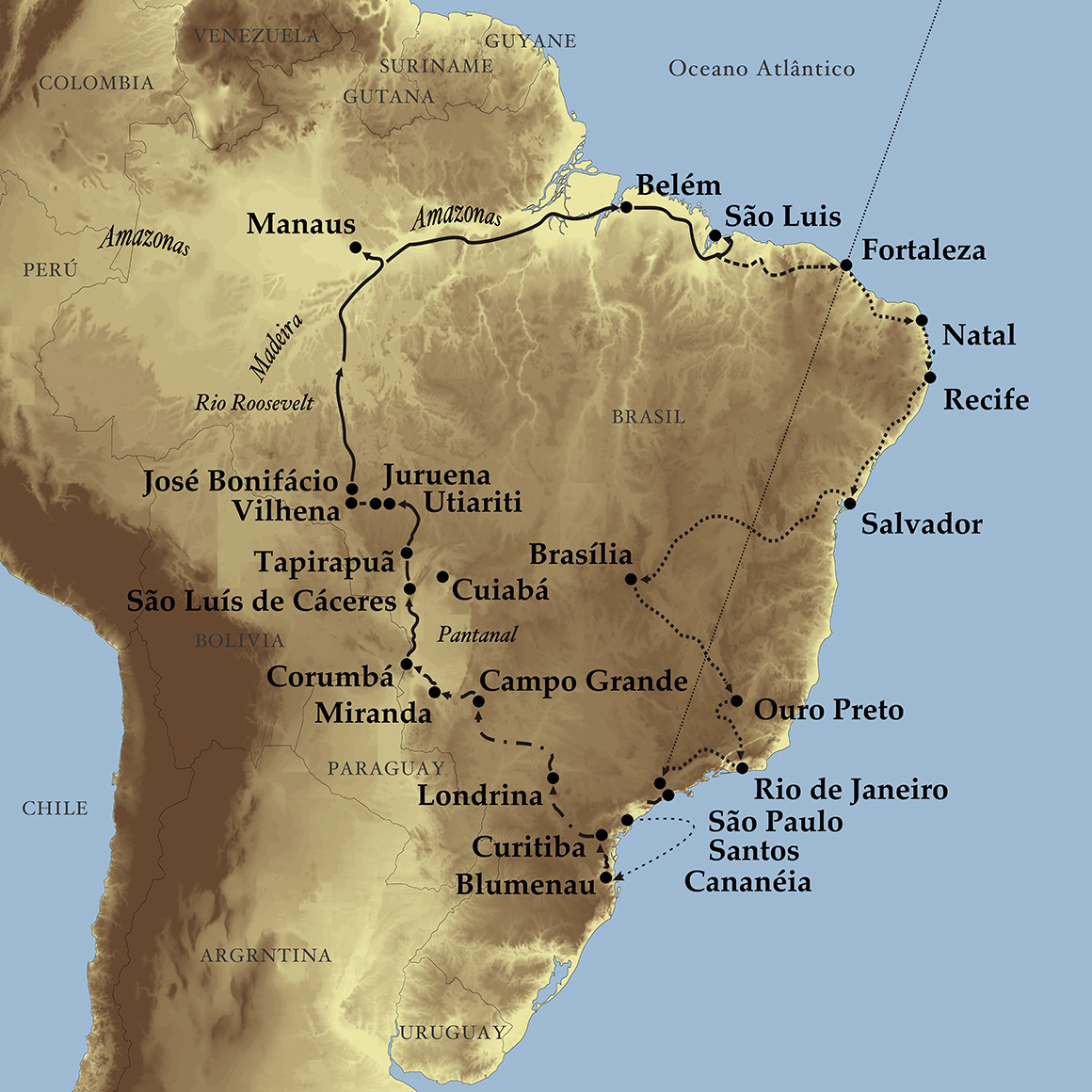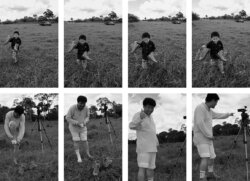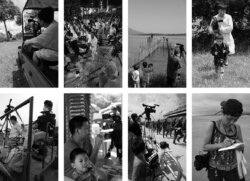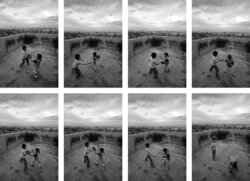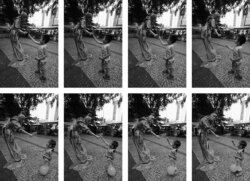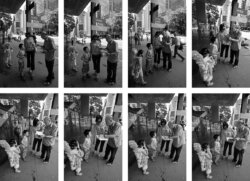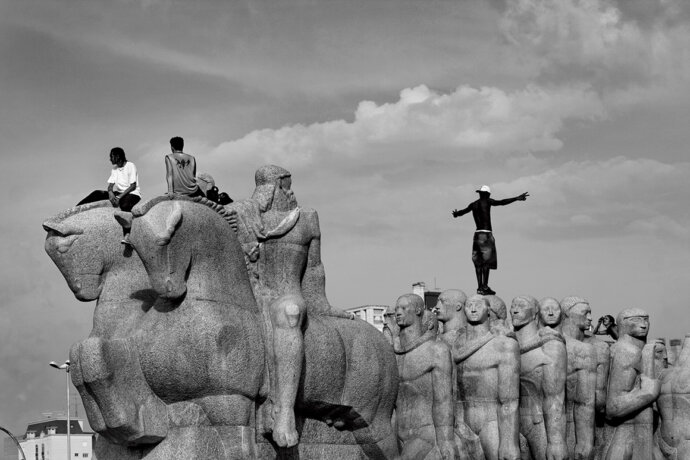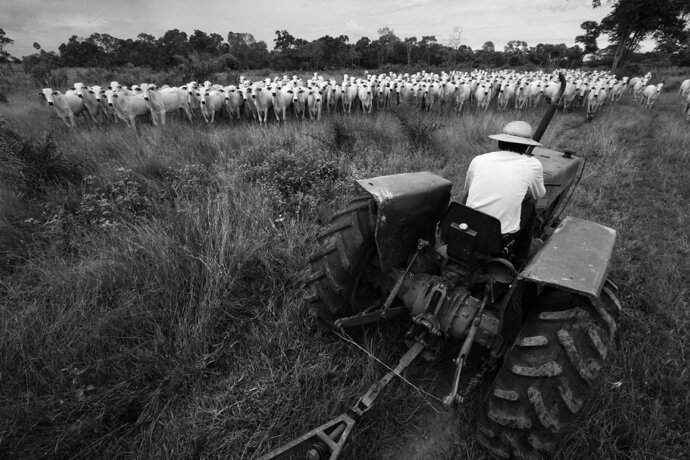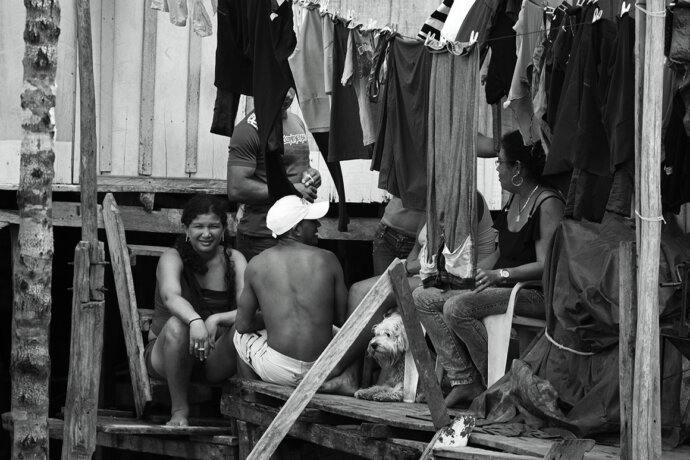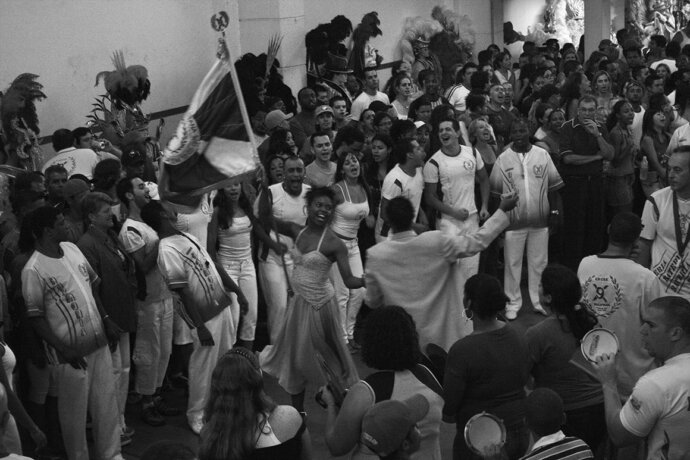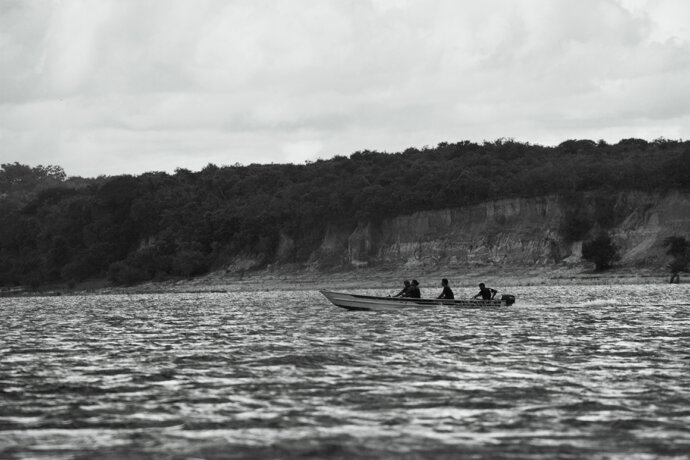In 2000, Chinese photographer Yanjun Zhang and his wife, as both planners and executants, followed by three Brazilians and equipped with the most advanced digital photography collector and outdoor equipments, and driving jeep SUV modified by CHRYSLER MOTOR CORPORATION, Brazil-made Chevrolet SUV and Fort-supplied vehicle, began their unprecedented photography project, to create the documentary film Encantos da Cultura – Poemas de Amor do Brasil, from Sao Paulo, “the melting pot of world’s immigrants” to Cananéia, the firstly-named Brazilian city. Along the line traveled by gold washers, through Florianópolis, the famous coastal city of South America, Curitiba (capital of Parana State) and the “German Town” Blumenau, they reached the swampland city Miranda and entered Amazonia from Columba, the border city between Brazil and Bolivia. On the way from Miranda to Columba, the three followers left successively, and after entering the swampland, the guide was unwilling to continue either. Successive accidents turned this dreamlike culture exploration travel to the dangerous survival-exploration. The whole project costs 10 years with a journey of 150,000km traveled, 200,000 pictures shot with 83,000 participants and 6,300 hours of image records.
The documentary film Encantos da Cultura – Poemas de Amor do Brasil with the topic of legendary culture exploration journey of Yanjun Zhang and his wife, as well as their two children later, in Brazil, and the subject of native culture, discusses the social realities of Brazil and describes the cultural strengthfrom the unique perspective of racial cultures integration. The film perceptually records the multiple and complex cultural phenomena of Brazilian ethnography and presents the racial cultures such as Fandango, coffee, Samba and football which deeply influence Brazil, and the beautiful natural landscapes and mysterious animal paradise of South America.
This was an extraordinary photography experience, from a perceptual plan to a hunt for photos, and from a video exploration to a survival exploration in the “depopulated zone”.It was the legendary experience that created this great film. From the fusion of world immigrants to the towns of South American aborigines and to the gold washers who lived alone in the depopulated zone, we, for the first time, used video to describe the fusion of ethnic cultures and exhibit the unknown world deep in the Amazon River, as well as the forgotten ethnic groups and their mysterious culture unknown to the outside world. From the enchantment of graceful, charmful and distinguished beach culture to the sacred “last frontier virgin land”, from the observance on the orthodox custom left from the middle century to Sao Paulo unscrupulous show of its wealth, and from the of the model of humane economy, “Carnival” festival’s magnificence and joyful atmosphere suffused with explosions to Pantaleiro’s royal but blurry missing to the birth land, fully singing out infinite pathos and grief ….The first part of the film is themed on celebrations (Festa). Its purpose is to create “collective ebullience”, popular among all regions, rooted in a habitation of certain races and displayed in the traditional form. The film explores racial conflicts for enlarging the power of ethnic groups by way of “prosperity of domain”. The second part, “Our Sea, the Sea of the World” (A MAR, O MAR) discusses varying viewpoints and social changes. In the first Brazilian town (Cananéia) named by colonists, state modernization and the abolition of slavery haven’t left much impact. From the time when the Portuguese landed to the period when countless expeditions, adventurers, explorers, pirates and sea thieves came and left, the local inhabitants have lost their initial curiosity towards the passers-by. Imported religion has taken the place of their traditional faith and ceremonies and the Indian’s ancient way of life coexists with modern civilization. The third part, Pantaleiro focuses on the descendants of gold prospectors, who have become a new ethnic group in Brazil. Cherishing and respecting their ancestors, these people live in a paradise isolated by wilderness. Finally, the film turns its focus to Sao Paulo, the largest immigrant city in the world and a melting pot of all races. There are eighty million people with the most complex races around the world living here. The common dream impelled different ethnicities to unite into a “pure ethnic group” – St. Paulers (Paulista). With experience and toughening, this great “melting pot of world’s immigrants” has formed a splendid and fantastic “Local Culture”, as is reflected on the spiritual and sensory levels of their people and rooted in various aspects of life.
Yanjun Zhang
President of BOA Center Limited & RevistaRECURSO
On February 20, 2009 in Sao Paulo


